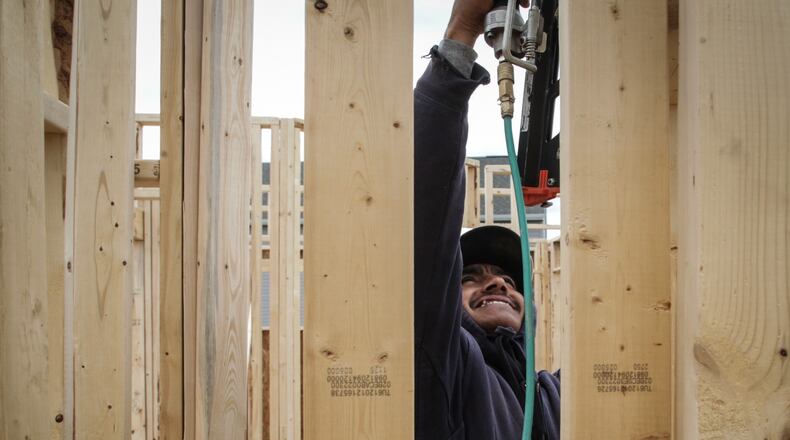Unprecedented lumber prices have caused the average price of a newly constructed, single-family home to increase in the past year by nearly $36,000, up from $24,000 this April, the National Association of Home Builders said last week.
“Although the housing sector continues to be a leader in the nation’s economic recovery, these sharp price increases threaten housing affordability for all Americans,” according to the NAHB.
Lumber prices have “skyrocketed” 280% since the COVID-19 pandemic hit last year, Fortune reported last week.
The lumber cost is “definitely a problem for our builders,” said Sharon Geier, president of Dayton Realtors.
Local industry professionals have said spring 2020 mill shutdowns led to labor and supply shortages while the new housing market continued to grow. In a recent three-month span, U.S. single-family housing starts hit a 15-year high, according to NAHB.
A combination of low interest rates, a surge in homebuying and lack of existing available housing are also factors for the higher costs, many agreed.
Local new home prices
But Dayton-area real estate prices traditionally have been lower than the national average, said Mike Gorman, a University of Dayton School of Business Administration professor.
While he expects local new home prices to rise, “I don’t think you should project the national increase on Dayton homes,” Gorman said.
Charles Simms, president of Charles Simms Development, expressed similar thoughts last month.
He estimated the price in this market for homes in the $200,000- to $300,000-range to be up “between $10,000 to $15,000 while houses in the $300,000- to $500,000-range would cost around $20,000 more.
But the head of the Home Builders Association of Dayton said he expects area home prices to rise more dramatically.
“It’s a lumber issue. It’s not a regional issue,” said Eric Farrell, HBAD executive director.
“Even locally, we’re not getting the lumber cheaper here in Dayton than anywhere else in the country,” he added. “We’re still fighting for the same supply. And our lumber suppliers have to buy it at a premium, which then has to be turned over to our builders.”
The Dayton-area housing market includes both national and custom builders, with each seeing a different impact, Farrell said.
Locally, national builders will likely have prices similar to the average increases across the country, Farrell said. One custom builder recently said estimates involving lumber work were $55,000 higher, he added.
The custom builder’s lumber package estimate that was $55,000 in January came back in March as twice that rate, Farrell said.
In another instance, a builder last week said it had to raise price of a home $30,000, he added.
‘A consumer issue’
“At the end of the day this is a consumer issue,” Farrell said. “It’s housing’s issue. But it is beginning to impact the consumer more so than ever before.”
Meanwhile, Gorman said, “existing homes are in short supply – especially in the places they want them now.
“People are moving to the country. People are moving to smaller towns,” Gorman added. “They don’t want to be in apartments because they’re tired of living on top of each other. These are all things that drive up interest in homes.”
The total inventory in the local market dropped from 3,175 in March 2019 to 2,523 in March 2020, according to the Dayton Realtors, which covers Darke, Greene, Montgomery, Preble and Warren, Preble counties.
This March, it was at 846, the organization said.
Nationally, privately-owned housing starts in March were at a seasonally adjusted annual rate of about 1.734 million, 37% above the March 2020 rate, according to the U.S. Census Bureau.
And in a recent three-month span, single-family housing starts averaged 1.2 million, a level not seen since 2006, according to NAHB.
About the Author

